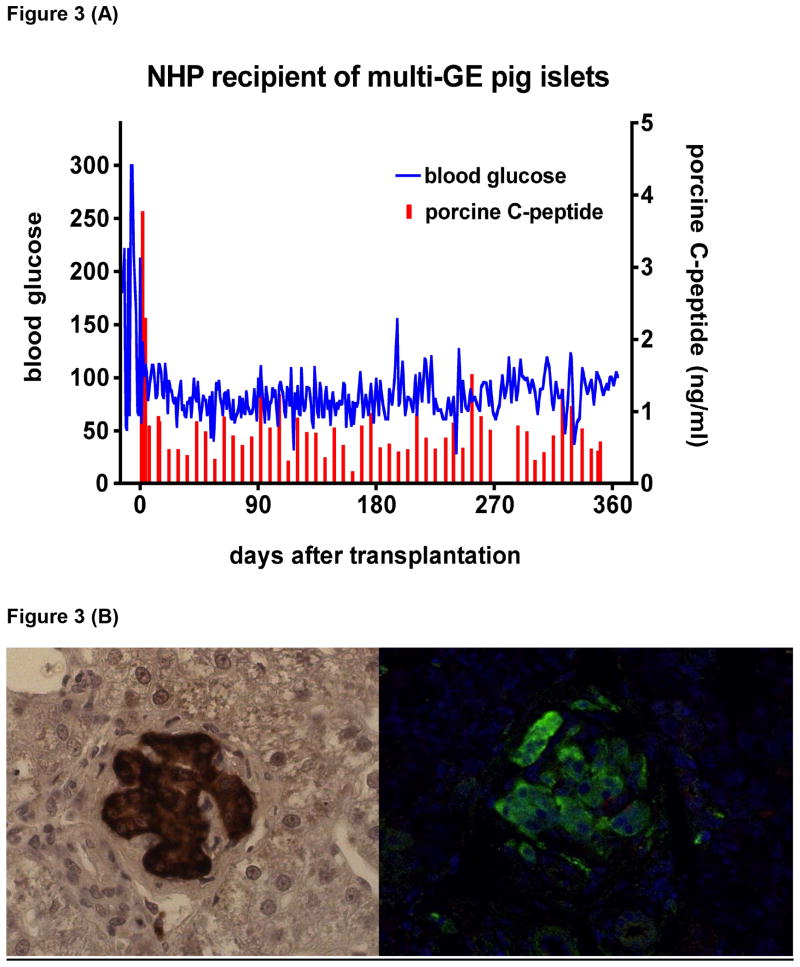Figure 3.
(A) Blood glucose (blue) in a streptozotocin-induced diabetic cynomolgus monkey that remained insulin-independent and normoglycemic for more than one year after adult porcine islet xenotransplantation (using a GTKO pig transgenic for the human complement-regulatory protein CD46, the human coagulation-regulatory protein tissue factor pathway inhibitor, and the immunosuppressive agent CTLA4-Ig) at the University of Pittsburgh. NHP= nonhuman primate; GE= genetically-engineered.
(B) Histopathology with insulin immunostaining of the liver 12 months after porcine islet xenotransplantation into the portal vein in the same cynomolgus monkey as in (A). Left panel shows insulin immuno-staining in paraffin-embedded liver tissue. Right panel shows green fluorescent insulin immuno-reactive cells in paraformaldehyde-fixed liver tissue. Islet morphology is well preserved. No islets were detectable in the monkey's native pancreas.

